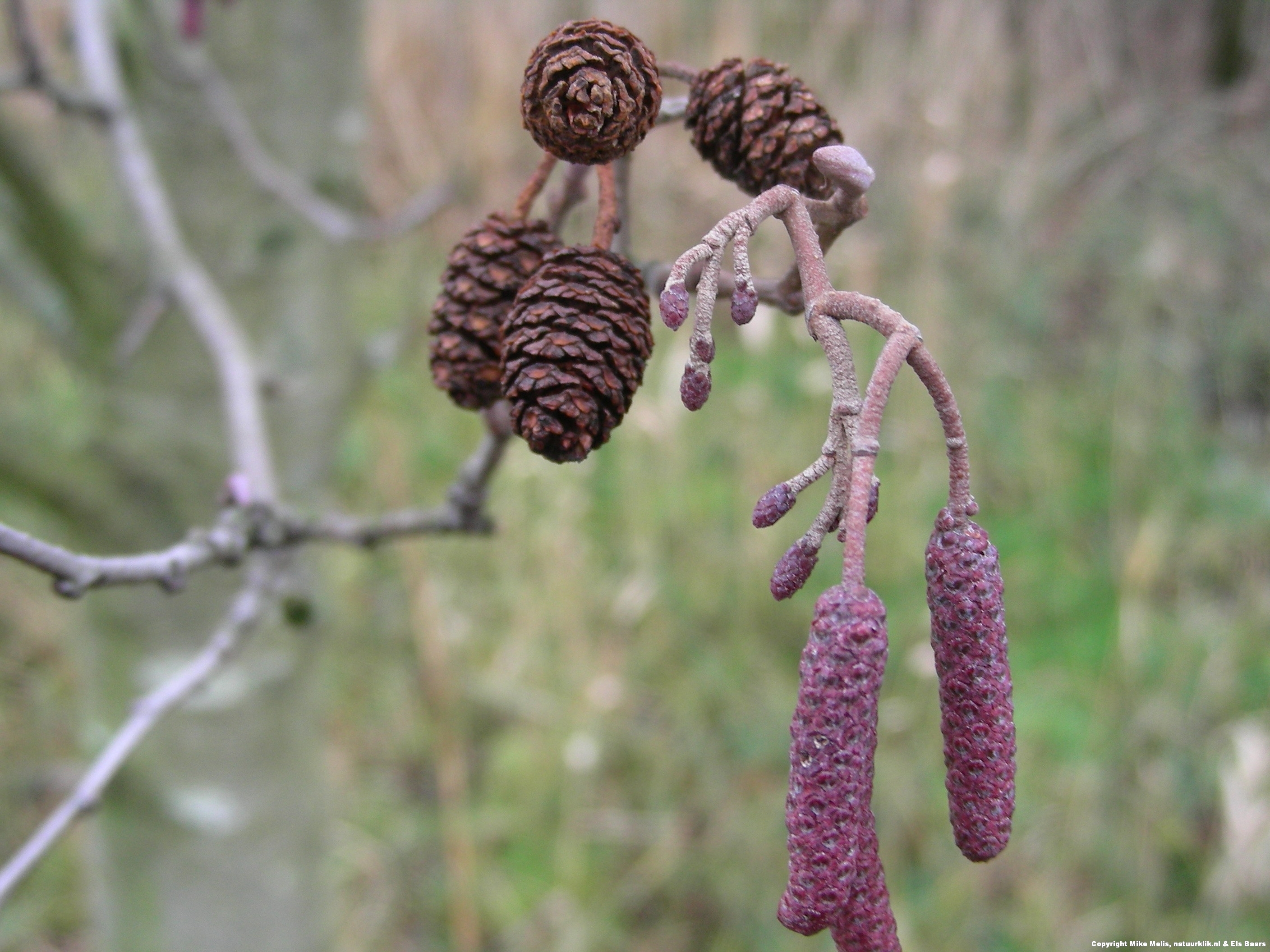Winter is a time when nature rests. In many nature reserves trees are pruned. The ash, willow and alder are cut right back down so that only 40-50 cm. of the trunk is left above ground. The wood of the ash and willow is white. But were you aware that the wood of the alder turns red when cut? How this came about is a sinister tale. Draw near and listen to this old Celtic story …
A long time ago a ten-year-old girl by the name of Jacu was plucking cowberries in the early morning. The surrounding countryside was open heathland with views interrupted only here and there by an occasional small group of bent, ragged trees. It already promised to be a beautiful day with the upcoming sun quickly dissolving the last wisps of mist. Suddenly out of the mist appeared some wizards walking in her direction. Scared to death, Jacu scrambled up into an old alder which had almost seen a hundred summers. Up in the tree she clung firmly to the brown trunk and waited, protected by the blanket of green leaves, for what would happen next.
Chance would have it that the group of wizards chose to sit down in a circle at the foot of the very alder in which Jacu had found her hiding place. She gasped when she saw they had placed the body of a dead woman in their midst. With a large knife the oldest wizard cut up the body into pieces. This was followed by a ritual whereby every part of the woman’s body was thrown up into the air higher and higher, while the wizards mumbled sonorous chants. One wizard threw a limb so high that it suddenly hit the branch on which Jacu had taken refuge. The lower arm got stuck in the tree. The men in their black robes continued the throwing ritual for a few minutes longer, after which they carefully pieced together the parts of the body. But….the lower section of the woman’s right arm was missing! Sharp eyes looked up. Jacu clung even more tightly to her branch. But the wizards saw nothing, shrugged their shoulders and gave up the search. The oldest wizard sawed a larger than average branch out of the tree, hacked and chopped it into the shape of an arm and placed it on the place of the missing limb. Mysterious chants rose up from the group. All the wizards stretched their arms out towards the woman. The oldest waved his wand and then they all were still once more. Jacu could not believe her eyes when she saw the woman open her eyes and move again. She had been brought back to life!
The wizards and the woman then stood up and walked quietly out of the wood back out onto the open heath again. When the wizards had long disappeared from sight, Jacu climbed down out of the alder and ran home to tell her mother what she had just seen. From that day on the white wood of the alder turns red when you cut it. Red from the blood it gives to the dead to enable them to return again to the world of the living.
0-0-0-0-0-0-0-0-0-0-0
Celtic warriors used parts of the alder for healing wounds. The alder is a typical tree of the wetlands of Western Europe. They used to grow abundantly in the wet woods behind the dunes and in the deltas of the great rivers. The wood is soft but becomes highly durable in water and so is often used for piles and riverpiling. Most of Venice is built on piles of alder and linden wood.
Stop and take a careful look sometime in the middle of summer at the inflorescence. At the end of the branches you can usually see three generations: the old alder seedballs of the previous year, the green seedballs for the coming winter and the embryonic catkins for the coming spring. Goldfinch and siskin adore the seeds of the seedballs.

